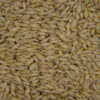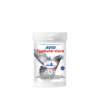
Chronic Respiratory Disease in Pigeons
Chronic Respiratory Disease in Pigeons: Causes, Symptoms, and Effective Management
If you’re a racing pigeon enthusiast or breeder, you know how critical respiratory health is to your birds’ performance and well-being. One of the most common and persistent threats to pigeon health is Chronic Respiratory Disease (CRD). Often underestimated, CRD can have long-term effects on a loft if not identified and treated early.
In this blog post, we’ll explore what chronic respiratory disease in pigeons really is, what causes it, how to recognize symptoms, and most importantly—how to treat and prevent it to ensure peak health and performance in your flock.
What is Chronic Respiratory Disease (CRD)?
Chronic Respiratory Disease is a complex condition typically caused by a bacterial infection, most often Mycoplasma gallisepticum. However, it’s rarely a single-pathogen issue. CRD in pigeons is usually the result of co-infections involving viruses (like paramyxovirus), fungi (such as Aspergillus), or other bacteria (like E coli or Pasteurella multocida). These pathogens compromise the immune system, making pigeons more susceptible to secondary infections.
The disease becomes “chronic” when it lingers or reoccurs, especially in pigeons under stress—during racing season, transport, or breeding.
Causes of CRD in Racing Pigeons
Several environmental and biological factors contribute to the development and persistence of CRD in pigeons:
1. Mycoplasma Infection
The most common culprit behind CRD. It attacks the respiratory tract, causing inflammation and mucus build-up.
2. Poor Loft Hygiene
Dust, dander, droppings, and ammonia from wet bedding create a breeding ground for respiratory pathogens.
3. Stress Factors
Overcrowding, poor ventilation, long-distance transport, and abrupt weather changes weaken the bird’s immune system.
4. Concurrent Infections
CRD often involves multiple pathogens. A viral infection can weaken respiratory defenses, allowing bacteria to invade.
5. Nutritional Deficiency
A lack of essential vitamins and minerals—especially Vitamin A, B-complex, and E—can compromise the respiratory mucosa and immune response.
Recognizing the Symptoms of CRD
Catching the disease early is key to minimizing damage and preventing transmission to other birds. Here are the most common signs of CRD in pigeons:
-
Nasal discharge (clear to yellowish mucus)
-
Sneezing or coughing
-
Noisy or labored breathing
-
Swollen sinuses or eyes
-
Open-mouth breathing
-
Reduced flight performance
-
Lethargy and weight loss
-
Ruffled feathers
-
Wet or stained wattles/beak
Pigeons may appear normal during rest, but signs often worsen during flight or high stress.
Diagnosis: Confirming CRD
Because CRD symptoms overlap with other diseases like canker, paramyxovirus, or ornithosis, a proper veterinary diagnosis is crucial. Diagnostic steps may include:
-
Nasal or tracheal swabs
-
Bacterial cultures
-
PCR testing for Mycoplasma or other pathogens
-
Antibiotic sensitivity tests
These tests help identify the exact pathogen(s) involved and guide targeted treatment.
Treatment Options for Chronic Respiratory Disease
A comprehensive treatment plan should combine antibiotics, supportive care, and environmental adjustments.
1. Antibiotics
Common antibiotics for CRD include:
-
Tylosin – highly effective against Mycoplasma
-
Doxycycline – broad-spectrum, often combined with tylosin
-
Tiamulin – another Mycoplasma-specific antibiotic
-
Enrofloxacin – for secondary bacterial infections
Always administer antibiotics based on antibiotic sensitivity testing to avoid resistance and ensure effectiveness.
2. Supportive Care
-
Multivitamin supplements, especially B-complex and Vitamin A
-
Electrolytes during heat stress or post-racing
-
Immune boosters like oregano oil or garlic extract
3. Environmental Improvements
-
Clean the loft regularly.
-
Improve ventilation to reduce dust and ammonia buildup.
-
Replace bedding frequently with absorbent materials.
Prevention: The Key to Long-Term Respiratory Health
An ounce of prevention is worth more than a pound of antibiotics. CRD prevention begins with proper loft management and proactive health checks.
1. Maintain Loft Hygiene
-
Clean droppings daily.
-
Disinfect perches and walls weekly.
-
Use low-dust bedding like hemp or corn cob.
-
Keep humidity low to prevent fungal growth.
2. Boost Immune Health
-
Feed a balanced, nutrient-rich diet.
-
Add natural supplements like oregano, garlic, and probiotics.
-
Provide grit and minerals regularly to support digestion and metabolism.
3. Quarantine New Birds
-
Isolate new arrivals for 2–4 weeks.
-
Conduct a respiratory health screening before introducing them to your loft.
4. Vaccinate
-
Keep vaccinations up to date, especially for paramyxovirus.
-
Some lofts use autogenous vaccines against Mycoplasma if recurrent outbreaks occur.
5. Monitor Early Signs
Train yourself to recognize early signs of respiratory issues—catching it early often makes the difference between a quick recovery and a full-blown loft outbreak.
Racing Considerations for Pigeons with CRD
If a bird has a history of CRD, it’s essential to evaluate whether it’s safe to enter it into competition. Racing pigeons need strong lungs, clear sinuses, and high stamina. Birds with chronic respiratory issues will likely underperform and can even infect others during transport or communal loft housing.
Regular vet checks and pre-race health assessments can help avoid complications during the racing season.
Long-Term Management Tips for CRD-Exposed Lofts
Once your loft has experienced a CRD outbreak, it’s critical to manage it proactively to prevent reoccurrence:
-
Use preventive antibiotics in consultation with a vet during stressful periods.
-
Disinfect water lines and feeders regularly.
-
Rotate natural immune-boosting supplements into your flock’s routine.
-
Perform periodic full respiratory panels during off-season to ensure pathogens aren’t lingering.
Final Thoughts
Chronic Respiratory Disease is one of the most common and persistent health issues facing racing pigeons. However, with proper loft management, early detection, targeted treatment, and strong preventive measures, CRD doesn’t have to spell the end of your pigeons’ racing potential.
By keeping a close eye on your birds and making respiratory health a top priority, you can maintain a vibrant, race-ready loft all year round.
Looking to protect your pigeons from CRD?
Explore our respiratory health supplements, antibiotics, and immune boosters specifically formulated for racing pigeons.https://www.performancepigeonfeedandsupplies.com/


